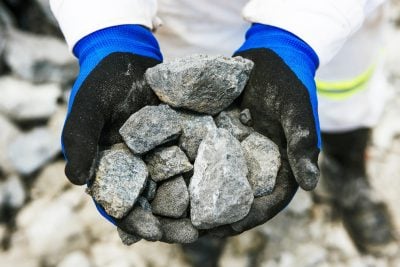The effects of Africa’s economic revival are evident in a wide range of industries across the continent, with the burgeoning alcohol market being a prime example of this new-found prosperity. Faced with considerable barriers, including counterfeiting and smuggling, the African wine and beer market is on track to grow at the fastest rate globally, until at least 2017. However, the pervasive availability of both inexpensive home-brewed and popular branded alcoholic drinks have brought different, but equally serious, public health risks to the forefront.
One of the most significant changes that the African alcohol industry has recently seen is consumers’ progression from – often illegally – locally brewed drinks to branded wine, spirits and beer products. “This movement towards safer, better quality, formal alcoholic drinks is being driven by improving disposable incomes and greater involvement and investment in the region from the multinational drinks companies, which are the key drivers to growth” says Daniel Mettyear, Senior Analyst at International Wine & Spirit Research (IWSR).
Major markets
South Africa is indisputably the largest alcohol market on the continent, with an expected total volume of 30.9m hectolitres in 2014, or 30% of the entire African market. Following quite a way behind is Nigeria with 15.2m hl and Angola with 12.8m hl. Although sales of all types of whisky are growing at a rapid speed across the continent, “sparkling wine is also trending very strongly in West Africa and Angola,” says Mettyear.
African alcohol consumers’ tastes vary significantly from country to country. South African still wine consumption grew by more than 7% in 2014, against a forecast of under 3%, totalling 36.4m cases with a
market value of $956.6m. Wealthier and oil-rich countries are beginning to move away from beer and embrace wine as their drink of choice.
“Angola is now the largest market for Alentejo [Portuguese] wines outside of the EU,” says Paul Nugent, Professor of Comparative African History at the University of Edinburgh.”Equatorial Guinea, another oil producer, is primarily a wine-drinking country. It drinks more wine per capita than South Africa does, as does São Tomé.”
According to a study released by IWSR, African wine consumption has increased five times faster than the global average, showing total growth of 17.3% from 2008 to 2013, reaching sales of 864 million still light wine bottles. This figure is forecast to increase by a further 11% by 2018. Even with the improved sales levels no African country makes the top-30 alcohol consumption per capita league table, according to WHO statistics, as the growth comes from a low base.
Overcoming obstacles
Beyond the obvious problems caused by excessive alcohol consumption, including the effect on healthcare systems that are ill-equipped to deal with alcohol abuse, there are major concerns around illicit alcohol. “The greatest risk comes from adulteration of alcohol, especially for those drinks made from ‘natural products’ like palm wine and beer, where sellers are often tempted to add things to increase the kick,” says Nugent.
Recent questions over Africa’s economic growth rate and security dangers also risk doing damage, albeit short term, to the continued growth of alcohol sales. “The main barriers to the development of the alcoholic drinks market are high taxes and the difficulty in developing good distribution networks,” says Mettyear.
Inadequate infrastructure is a widespread problem that is slowly being addressed in many African countries, but the impact of the illicit spirits market is far harder to deal with, as it is almost impossible to accurately estimate its size. Researchers at analysts Canadean believe these products can account for up to 90% of all alcohol consumption in some markets, indicating the extent of the problem.
Strong growth may be predicted in the next few years, but worries have been raised about how much longer this thriving market can be sustained. African countries with large Muslim populations have particularly low per-capita alcohol consumption rates, with Mali, Egypt, Somalia, Algeria and Guinea all showing average alcohol consumption per person per year at under 1 litre. Data from the World Health Organisation estimated that in 2004 over 57% of those living within their defined ‘Africa region’, excluding Egypt, Libya, Tunisia, Djibouti, Morocco, Somalia and Sudan, were completely abstinent from alcohol, with 70.8% not having drunk a drop of alcohol in at least a year. These numbers are far lower in established Western alcohol markets with only 19% of Europeans and nearly 18% of Americans being lifetime abstainers.
Growth opportunity
High-profile figures in the drinks industry are preparing for the continent to become a key growth engine. Alexandre Ricard, chairman and chief executive of the French spirits company Pernod Ricard believes that brown spirits will power this expansion, as African consumers follow the same path as Asian buyers in the 1990s and move towards international Western-style categories, he told trade publication The Drinks Business.
“Across Africa, flavoured alcoholic beverages (FABs) and cider are the fastest-growing categories,” according to Kieron Gradwell of market research company Canadean. “In Nigeria, FABs are forecast to reach 70m litres in 2020 from 11m litres in 2015.” The seemingly unquenchable thirst for FABs is primarily due to Guinness’s hugely popular Orijin brand.
Nigerian alcohol consumers have long favoured locally brewed herbal blends over foreign beers, until the entry of Orijin in 2013, which now has a market share of over 50% in its sector. “Its higher alcohol content (6%) and the promise of African herbs and the right blend of traditional and modern elements have attracted consumers and other brewers are looking to emulate this success,” adds Gradwell.
Although not a major factor at the moment, the changing population make-up of Africa is giving certain types of alcohol a boost. The increasing number of Chinese people in Africa, thanks to robust foreign investment in projects on the continent, has boosted quality alcohol products, particularly French Cognac.
With beer sales in Africa expected to grow at the fastest rate of any region globally at 5%, compared to 4% in Asia and 3% in Latin American, major players are investing large sums in improving infrastructure and developing distribution bases, preparing for the bumper sales. Recognising and addressing the issues hampering the alcohol market in Africa will help ensure that growth stays on track. The opportunity for the global spirits industry in Africa is huge. “The rise in alcohol consumption comes down to accessibility, availability and affordability,” says Gradwell.
Want to continue reading? Subscribe today.
You've read all your free articles for this month! Subscribe now to enjoy full access to our content.
Digital Monthly
£8.00 / month
Receive full unlimited access to our articles, opinions, podcasts and more.
Digital Yearly
£70.00 / year
Our best value offer - save £26 and gain access to all of our digital content for an entire year!
 Sign in with Google
Sign in with Google 


